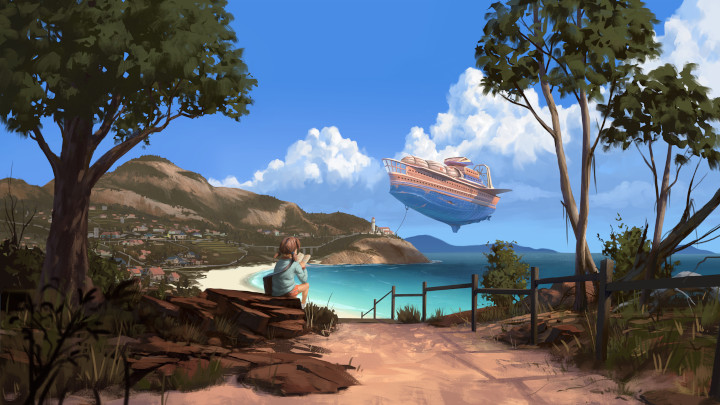
Adventure games are exciting to me because they are about exploring compelling locales, interacting with various non-playable characters, and oftentimes delivering a suspenseful storyline. When adventure games allow the player to make their own choices to unfold the story in multiple directions, it builds the player’s investment in that story. This is something I admire.
Wayward Strand had the opportunity to accomplish all of this, but it only lives up to these expectations in bits and pieces. I’ve completed my first playthrough of the game, and my impressions are a mix between surprise and disappointment.
Wayward Strand is a lighthearted adventure game that takes place in Australia in 1978. It puts you in the shoes of a sweet teenaged girl named Casey Beaumaris, whose mother is a nurse on a mysterious airship that was converted into a hospital. Casey is excited to work on a newspaper article for the school, as she loves journalism. She is on school holidays and her mother has asked her to visit this airborne hospital with her for three days to help her take care of the patients. Casey is taking this as an opportunity to take notes and work on her article.
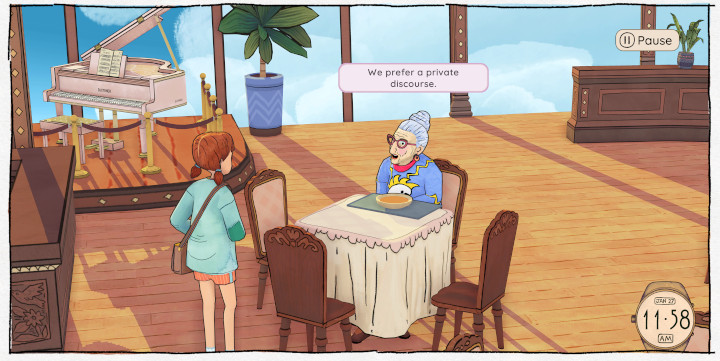
When you arrive at the hospital, the clock starts ticking and your day starts. From 8:00 a.m. to 5:30 p.m. you need to meet with patients to take care of them and help out the hospital staff, which is already struggling due to a shortage of employees.
However, little does Casey know that this is far from a routine experience. There is something mysterious about this airborne hospital, and each patient has a deep backstory.
Casey has a notebook, in which she’ll record here interactions with these characters, as well as the details she learns through observation. This structure allows players to not only pick choices based on each situation, but also to observe the environment and listen to other characters’ conversations. Then you can read back through these notes to connect the dots, helping Casey prepare her newspaper article, as well as trying to figure out what exactly is going on here.
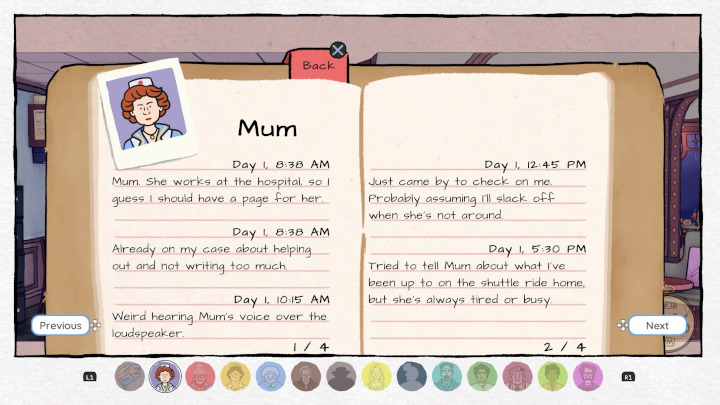
Wayward Strand follows a storybook theme in terms of presentation and graphics, which makes the game look very beautiful but also a little childish. This art style works to keep things feeling light and breezy throughout your journey. Personally, I loved the cartoony art style of the game, but I’m not sure it will land with everyone.
Like any good interactive adventure game worth its salt, Wayward Strand unfolds based on the choices you make. However, in my initial playthrough, I’m not sure I felt any butterfly effects from the choices I made specifically.
The main drive to complete your tasks is that the clock won’t wait for you to interact with the patients and progress in your journey. You can spend all day sitting at the cafeteria table, and the patients and other characters will do their routine tasks while you’re sitting there waiting. You only have three days here to understand and see what exactly is happening or has happened, so this time is fleeting.
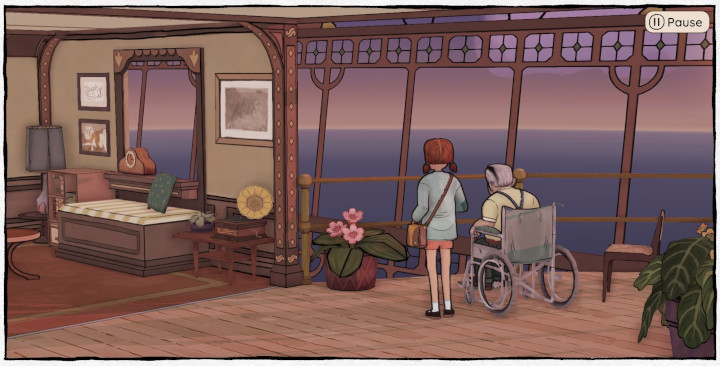
But does the gameplay have enough juice for a second playthrough? I am 50/50 here. If I ended up going nowhere in my first playthrough, surely I might try to play it again to see where I went wrong. But if you ask me whether I will go through this for a third time? I highly doubt it.
The gameplay guides you through its multiple choice options, but you’re not doing much more than talking to patients and roaming around within the same areas. To get the crux of the storyline, you need to peek a lot, listen to other characters’ conversations, take notes, rush to patients on time to attend to them, and ask the right questions. The scope of gameplay is limited, and the environment is confined. If you’re not completely invested in the game’s storyline, you might not feel compelled to keep moving forward through the game.
I believe that more environments could have been explored within the game to make it a bit more interesting. For example, When Casey and her mother head back home each evening, there could have been more gameplay and story showcasing Casey doing her evening activities, spending the night thinking about the mysteries about the airship and its patients, and attempting to connecting the dots to see how all of it is connected.
I did pretty well in my playthrough, but I was surprised that the game didn’t ever stop to give me a clue that I might be doing something wrong so that I can make some quick fixes. However the way the game ended for me left me feeling blank and flat. I was waiting for some sort of twist or something, but that never actually happened. However, the climax definitely urged me to have a second playthrough. I think that’s the purpose of the game: To compel you to dig deeper and experiment on a second playthrough. The game is pretty short, but it has depth in terms of content and storyline.
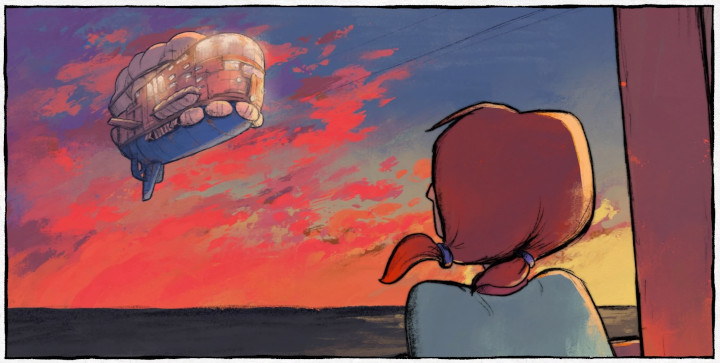
If you are a fan of storybook-style interactive games, and you have a sweet spot for simple visuals, you should try Wayward Strand for yourself to see where you land on the balance between the game’s length and depth. In meantime, I’m going to play through this again to see if I can connect all the dots and solve all of the mysteries.
Disclaimer: I was given a review code for Wayward Strand on PS4, but the opinions expressed in this article are my own.
